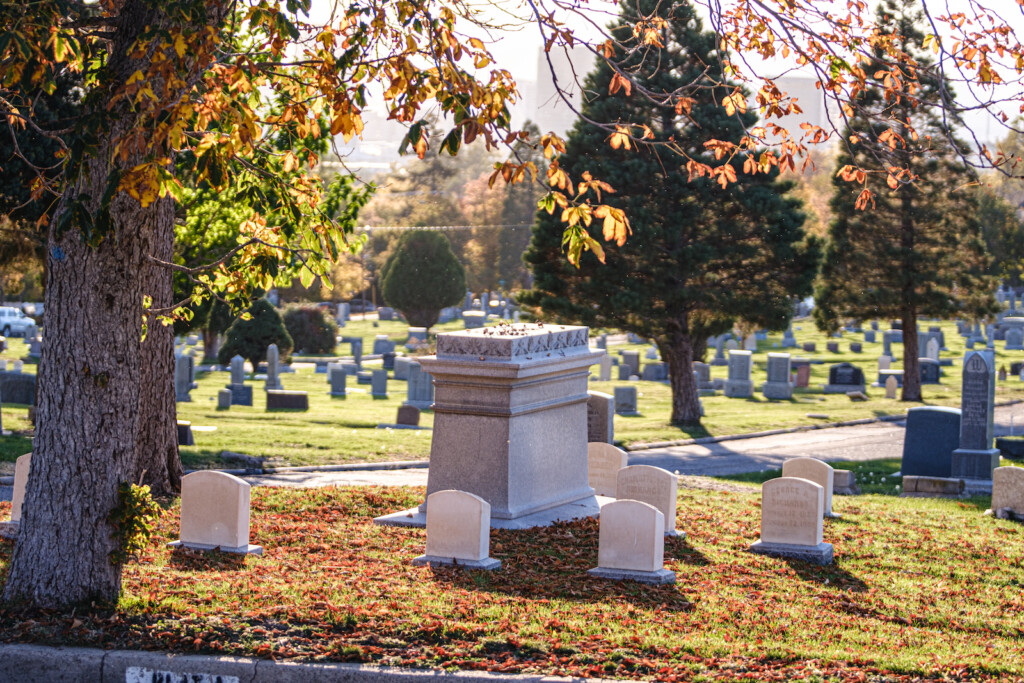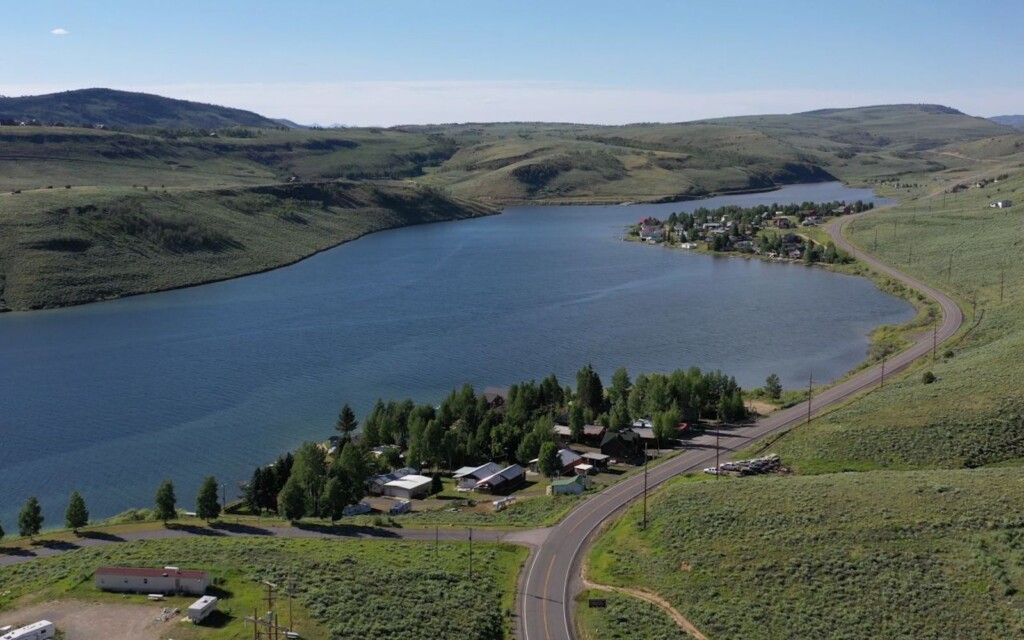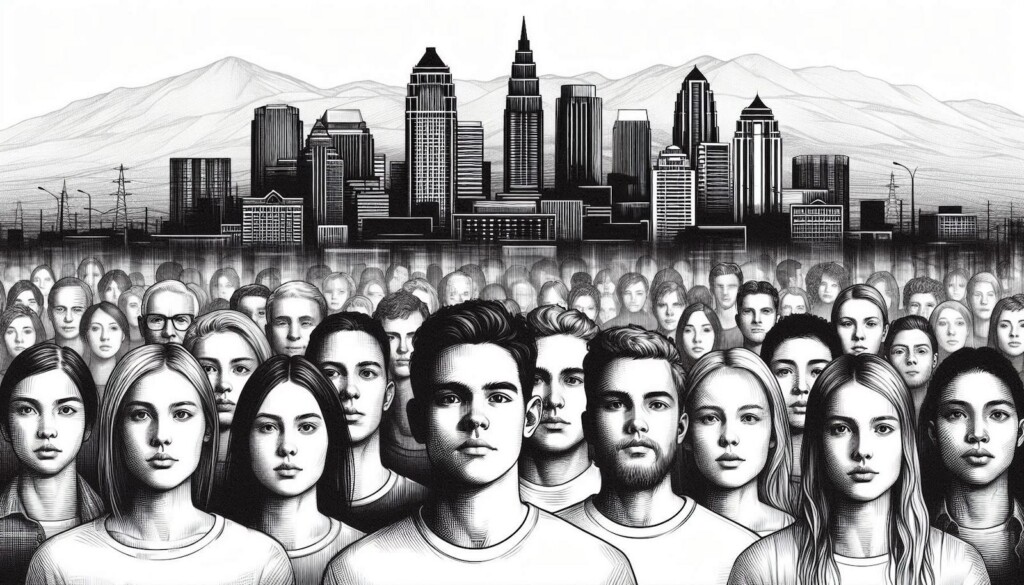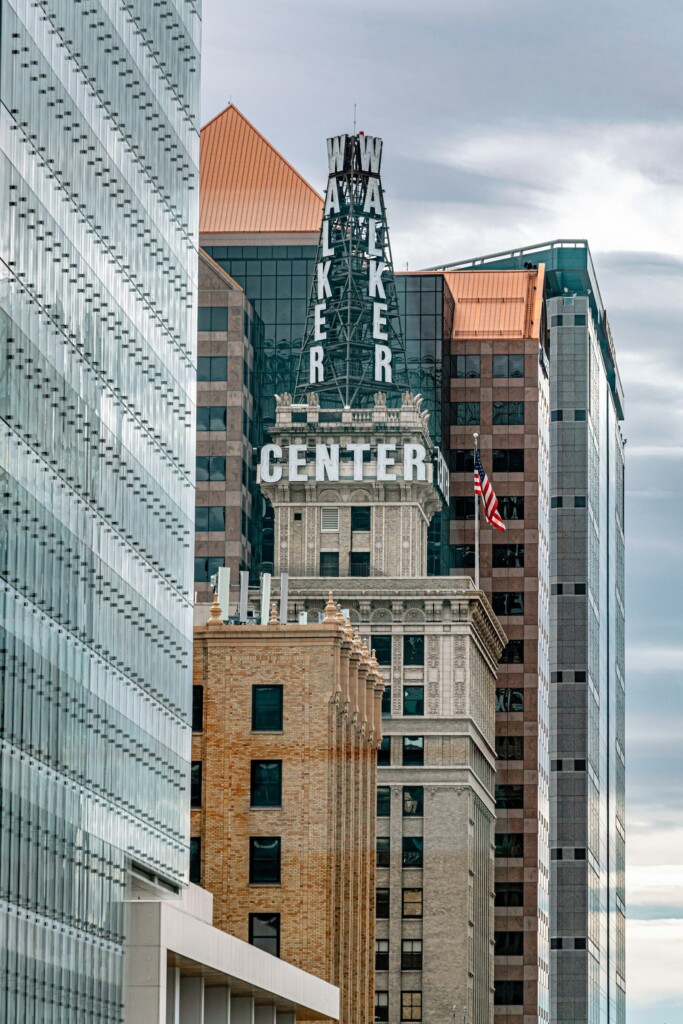As my dad was fond of saying, “No one gets out of this world alive.”
No matter how long we live, or how hard we try to avoid it, death will claim us all one day. What happens to us then?
It may seem like a morbid topic, but it’s a very real problem that can’t be ignored. With the world population now at 8 billion, an estimated 166,000 people die each day around the world (about 75 in Utah), and all those bodies have to go somewhere. We can’t create more land, so what happens when we run out of space to bury the dead?
There’s an old joke about cemeteries being popular places because people are just dying to get into them. The human practice of burying our dead is a unique trait that sets us apart from other animals. It also presents city planners with a serious dilemma.

SIX FEET UNDER
According to one urban planner, “Most of the graveyards and cemeteries are nearly full, yet people have a nasty habit of continuing to die.” Nearly a quarter of municipal cemeteries in America will be filled to capacity within 20 to 30 years, and one-in-six will be full within five years.
With a little over 120 acres and 130,000 burial sites, Salt Lake City’s cemetery is the largest municipally-owned cemetery in the country. The first burial took place there in 1848, and despite its size, it is rapidly approaching full capacity with little room for expansion.
Keith Van Otten is the sexton at the city cemetery. Even at the rate of 400 burials per year, Keith says that double-stacking graves and interring 6 urns in each plot will keep the cemetery viable for many more decades — perhaps as long as 60 years.
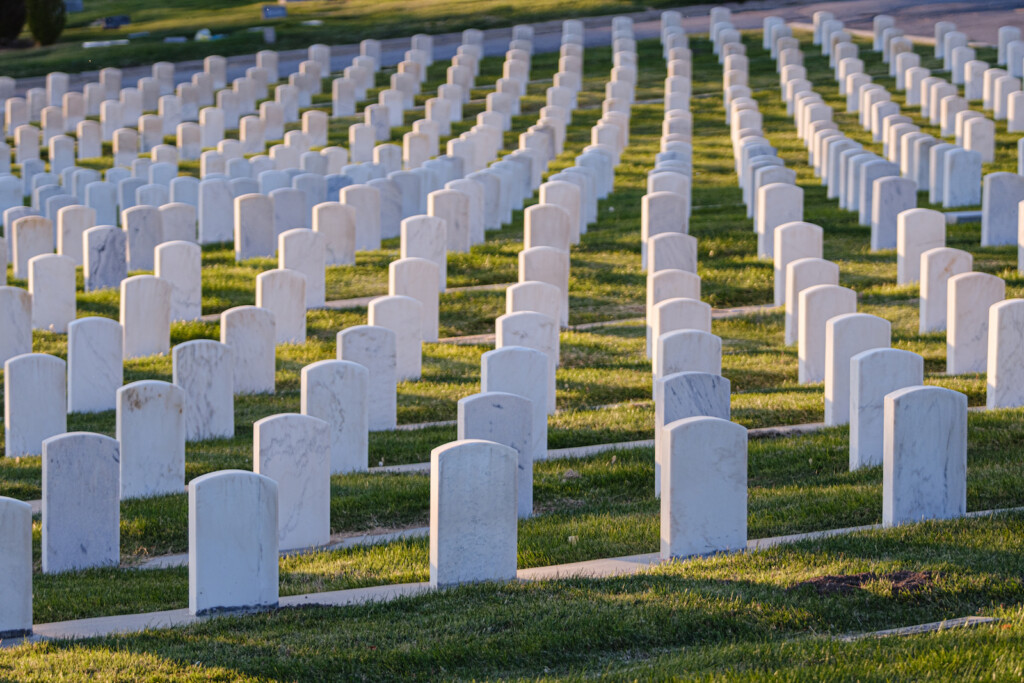
Centerville’s cemetery is virtually full, while the Kaysville and Farmington cemeteries are rapidly reaching capacity. These problems are compounded by relentless population growth.
Traditional burials emphasize embalming bodies with toxic chemicals that contaminate groundwater and use valuable materials such as wood and metal for a single use. Although Utah law does not require a casket, burial vault or embalming, individual cemeteries can require a vault, and about 58 percent of Utahns are buried in this fashion, which is unnecessarily expensive, wasteful, and damaging to the environment. It also prevents bodies from decomposing the way nature intended so the land can eventually be reused. What are the options?
CREMATION
The best space-saving option is cremation, which is the world’s oldest and most preferred post-life alternative to burial. Despite being a cultural norm, however, cremation also has its environmental downsides. Cremation is an energy-intensive process, and a cremated body produces hundreds of kilograms of carbon dioxide, as well as vaporized mercury from tooth fillings, which may account for as much as 16 percent of overall mercury emissions.
Then of course, there’s the problem of disposal. Urns are often buried, still taking up valuable space. You may have to keep Aunt Mildred’s urn on your mantle because scattering her ashes is illegal in some places, although Utah has no prohibitions against scattering the ‘cremains’ of people and pets in a place that was significant to them. National Parks are the exception, and a permit is required.
RECYCLING GRAVES
It’s always a good idea to recycle, and graves are no exception. People who died 150 years ago or more don’t get many visitors, so the recently deceased can sometimes be laid to rest on top of them. Recycling graves is cheaper, and enables new generations of families to be buried in the same graveyards as their ancestors. This alternative is not popular however, because grave recycling too often conflicts with religious and cultural traditions.
A better solution is to double-stack caskets in the same plot, which most of Utah’s cemeteries began doing many years ago.
ABOVE-GROUND CRYPTS
Above-ground crypts are commonplace in areas with high water tables, but the bodies remain permanently in the crypts, which, like burial, leads to the eventual filling up of available land space.
NATURAL BURIAL
Alive or dead, we should all be nicer to the planet. Natural burial, also known as green burial, has become a popular trend in recent years, and is eco-friendly. In a natural burial, no chemicals are used to preserve the body, and decomposition is accelerated by the use of compostable coffins that are buried closer to the surface where they break down faster. Some coffins are made of mycelium. These mushroom-like fibers can hasten the decomposition process (known as natural organic reduction) up to three times faster than normal. Coffins made of wicker, banana leaves and even cardboard are also used. Presenty, natural burials are only allowed at Lakeview Memorial Cemetery in Bountiful and Holiday Memorial Cemetery in Holiday.
In some places, remains can be exhumed and used as compost after a designated period of time. This could open the way for landscape burials in places other than cemeteries, such as freeway embankments, hiking trails and cycling paths. Washington State was the first state to legalize the composting of human bodies and turn them into soil. Other states are sure to follow.
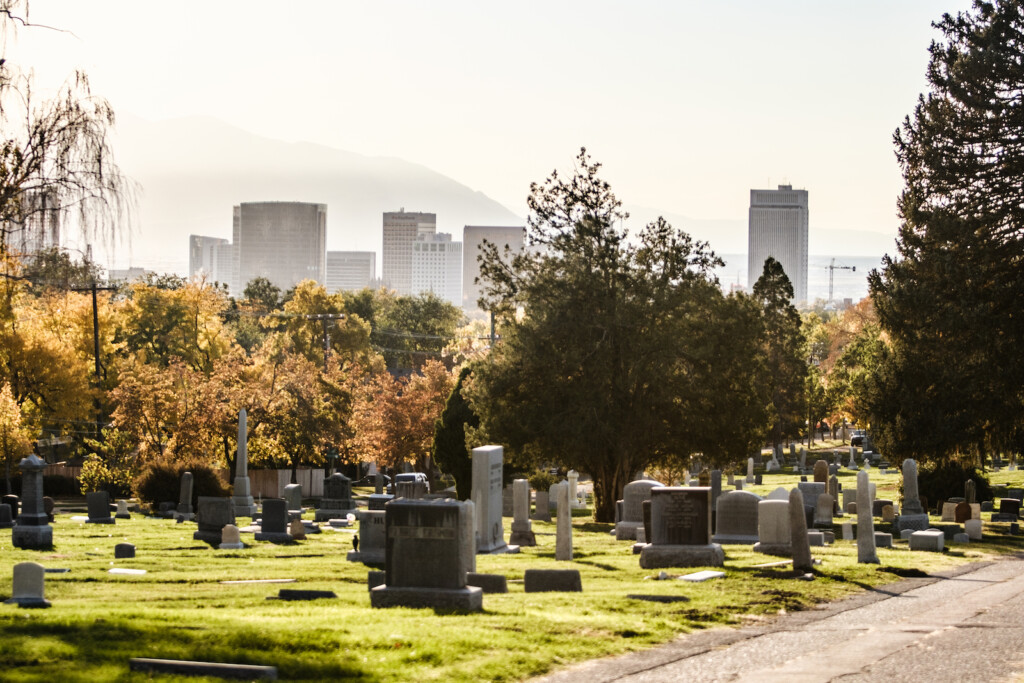
BECOME A TREE!
You can become a tree after death by being buried in a fetal position in a compostable pod and having a tree planted above you. This is known as Capsula Mundi. Your decomposing body provides nutrients for the tree, and your loved ones can visit you in a vibrant living forest rather than in a garden of cold stones and brass plaques. This option isn’t presently available in Utah, but increasing demand is sure to make it a reality in the foreseeable future.
Cremated remains, on the other hand, can be buried anywhere and a tree planted on top — even in your own backyard.
VIRTUAL GRAVEYARDS
In some parts of Asia, survivors can make online visits to virtual graveyards instead of visiting their ancestors in person.
BE A MEDICAL CADAVER
Donating your body to science may be the best use of your lifeless self. According to healthline.com, “Although experimenting on cadavers sounds macabre, it’s a long-standing practice that has the ability to advance medicine by leaps and bounds … Today, both aspiring and established doctors depend on the selflessness of donors to fine-tune their craft, discover new treatments and surgical approaches, as well as test medical devices.”
Medicine.utah.edu states: “After the medical studies are complete, the body is cremated and, in accordance with the donor’s wishes, the ashes are either returned to the family or placed in a common repository at the Salt Lake City Cemetery.”
Or, you could donate your body to the Institute for Plastination where real corpses and organs that have been preserved through plastination “go on public display after your bodily fluids and soluble fat have been replaced by liquid plastic.”
BODY FARMS
Another way to benefit scientific research is to donate your body to a mortuary science program, sometimes referred to as a body farm. Here, human remains are placed outdoors where they are allowed to decompose naturally, providing valuable forensic information that can assist in solving crimes. There are no body farms in Utah, however.
THE FUTURE
Despite all these potential solutions for dealing with the deceased, one crucial factor remains: appeasing the living. People want a place where they can visit their loved ones, spend time with them, and honor their memory. Whereas technology can help us solve the crisis of running out of cemetery space, especially if we continue to grow our population beyond a sustainable rate, we may need to rethink our traditional bereavement and memorial practices.
When most cemeteries become full, they are closed to new burials and a new cemetery is established elsewhere. But with a growing population and critical concerns for a healthy planet, it’s time to examine long-term solutions regarding how we dispose of our loved ones and ourselves when our time on this planet is done.
Feature Image: Salt Lake City Cemetery. All photos by John Taylor.

